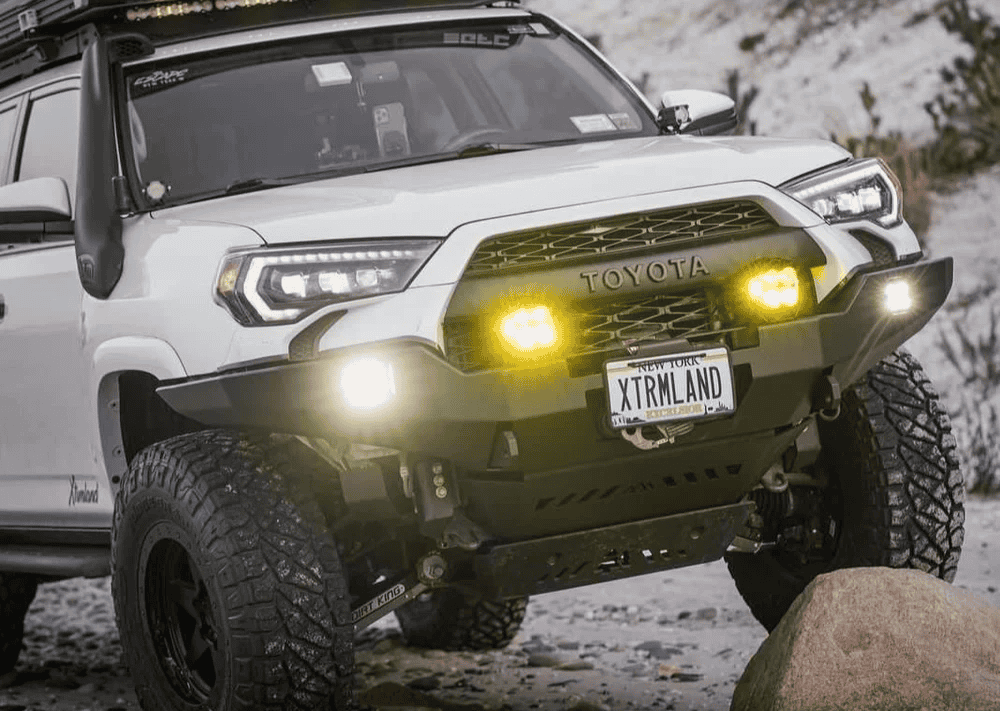Overland Vehicles

The Toyota Tundra makes a strong foundation for an overland camper when you match the build to the truck’s ratings. Payload varies by trim and generation, so verify the door jamb sticker and keep a running weight tally for people, fuel, gear, water, and accessories. A lightweight approach improves handling and braking, especially on long grades and washboard.
Distribute mass as close to the axle centers as possible. Heavy items like water, tools, and batteries ride best low and forward in the bed. Spare tires and jerry cans mounted high or far aft can add sway and slow steering response. Aim for balanced side to side loading to keep the truck level on rough tracks.
Brake performance matters once you add camp weight. Fresh pads, quality rotors, and a fluid flush help sustain stopping power when you descend with a full tank and loaded drawer system. If you tow a small trailer, set the brake controller and test in a safe area before heading for dirt.
A mild suspension lift with matched spring rates is enough for most travel. Older Tundra generations use leaf springs in the rear while newer models use a multi link rear with coils, so choose components designed for constant load. Progressive helper springs or air assist can maintain ride height with a bed system and water onboard. Keep shocks within their operating range to avoid heat fade on corrugations.
Tires are the first line of traction and puncture defense. All terrain patterns in a load rating appropriate for your weight work well for mixed routes. Many builds settle around a 33 inch tire; 35 inch tires may fit with trimming and careful offset selection but add rotating mass. A quality air compressor, tire repair kit, and a torque wrench are essential trail tools.
Changing tire diameter affects effective gearing. Larger tires can soften throttle response at low speed, so test crawl control and low range behavior after the upgrade. Calibrate the speedometer where possible to keep range and navigation accurate.
A reliable 12 volt system keeps fridges cold and lights on without idling. A common layout pairs a lithium house battery with a DC to DC charger to protect the alternator and ensure full charging on short drives. Solar on the topper or rack extends autonomy during sunny days. Plan your inverter size around real loads like laptops or small induction cooktops rather than peak wish lists.
Water capacity should match your crew and climate. Ten to twenty five gallons covers most two to four day trips with cooking and quick rinse showers. Use food grade hose, quick connect fittings, and secure tanks low in the bed. Simple filtration at fill plus an inline drinking filter reduces the chance of contaminants on the road.
Sleeping systems set the tone for your daily routine. A hard shell rooftop tent opens fast and pairs well with a sturdy bed rack. A wedge or full canopy camper adds stand up room, integrated lighting, and weather protection while keeping weight moderate compared to a slide in. A topper with a flat bed platform and quality mattress creates a stealthy, low profile solution that preserves fuel economy.
When choosing, weigh setup time, ladder use, headroom, and airflow. In wind or driving rain, a rigid shell with solid latches and proper seals keeps the cabin quiet and dry. Ventilation and condensation control are worth prioritizing if you travel in shoulder seasons.
Your bed is prime real estate for organization. Drawer systems secure tools and kitchen kits while keeping the deck flat for sleeping. A modular rack accepts a tent, awning, maxtrax, and fuel cans without drilling the bed. Topper side access windows and molle panels provide quick grab points for recovery straps and first aid.
Electrical and water components should mount on serviceable panels. Label circuits, use abrasion resistant loom, and leave drip loops to protect connections. Add dedicated tie downs for heavy items and a locking plan for valuables.
Recovery gear is like insurance. Skid plates protect vital parts on rocky climbs, and sliders guard doors on narrow tracks. Real recovery points front and rear pair with a kinetic rope, soft shackles, a shovel, and traction boards. Practice safe pulls on flat ground before you need them.
Navigation and communication round out the package. Offline maps, a reliable GPS head unit or phone app, and a paper backup keep you oriented. A GMRS radio improves convoy coordination when phones have no signal. Consider a satellite messenger for emergency contact in remote basins.
Fuel planning changes with tire size, roof load, and wind. Know your real world miles per gallon, then add a reserve for side trips and detours. Carry extra fuel only when your route requires it, and store it outside the cabin with proper venting.
If you want expert eyes on payload, layout, and integration, a professional upfit turns a concept into a dialed travel truck. OZK Customs designs power, storage, racks, and suspension around how you actually use your Tundra, then validates the system front to back before handoff. See the kinds of platforms we outfit on our Overland rigs page, or explore tailored packages on Custom overland upfit. Curious about our approach and shop standards? Start with Why choose OZK.
Tell us your crew size, trip length, and terrain. We will translate that into a clean electrical system, matched springs and shocks, smart storage, and a shelter that sets up in minutes. When the details are right, your Tundra overland camper feels calm on highways, surefooted on washboard, and ready for the next sunrise.
Ready to turn your Tundra into an expedition ready camper? Tell us how you travel and we will design the suspension, power, storage, and shelter to match. Submit the form and get a clear plan, transparent pricing, and a build timeline from the OZK Customs team.
ADDRESS:
6159 E Huntsville Rd, Fayetteville, AR 72701
PHONE:
(479) 326-9200
EMAIL:
info@ozkvans.com